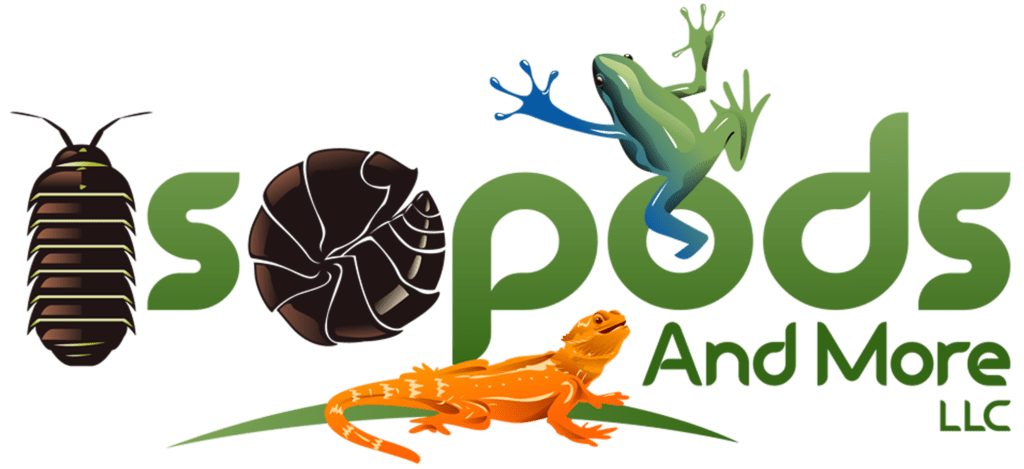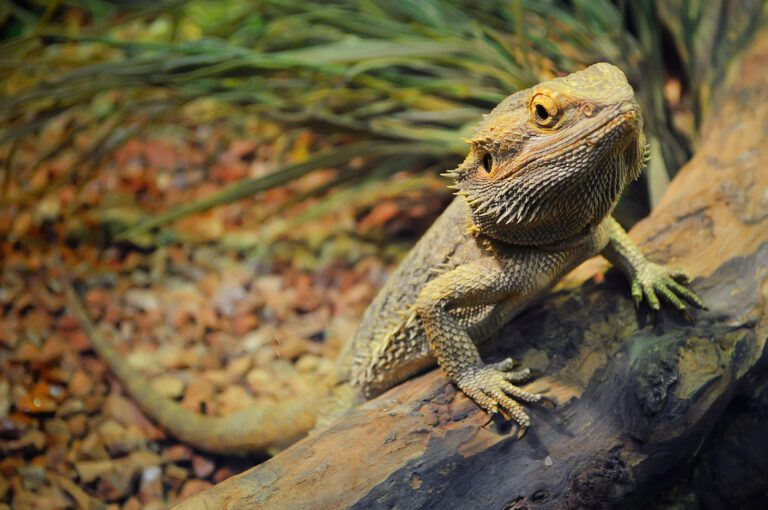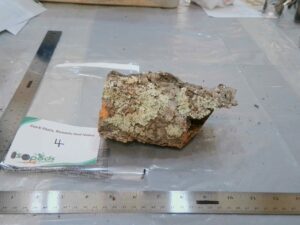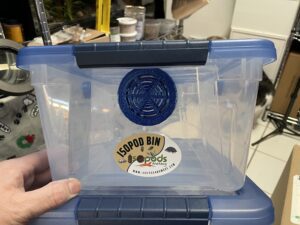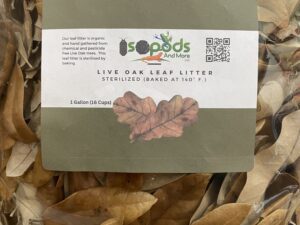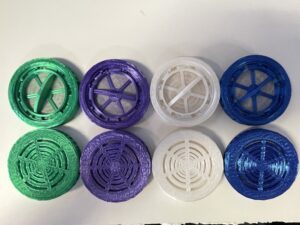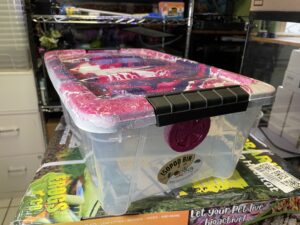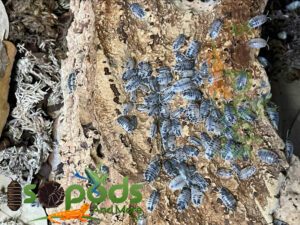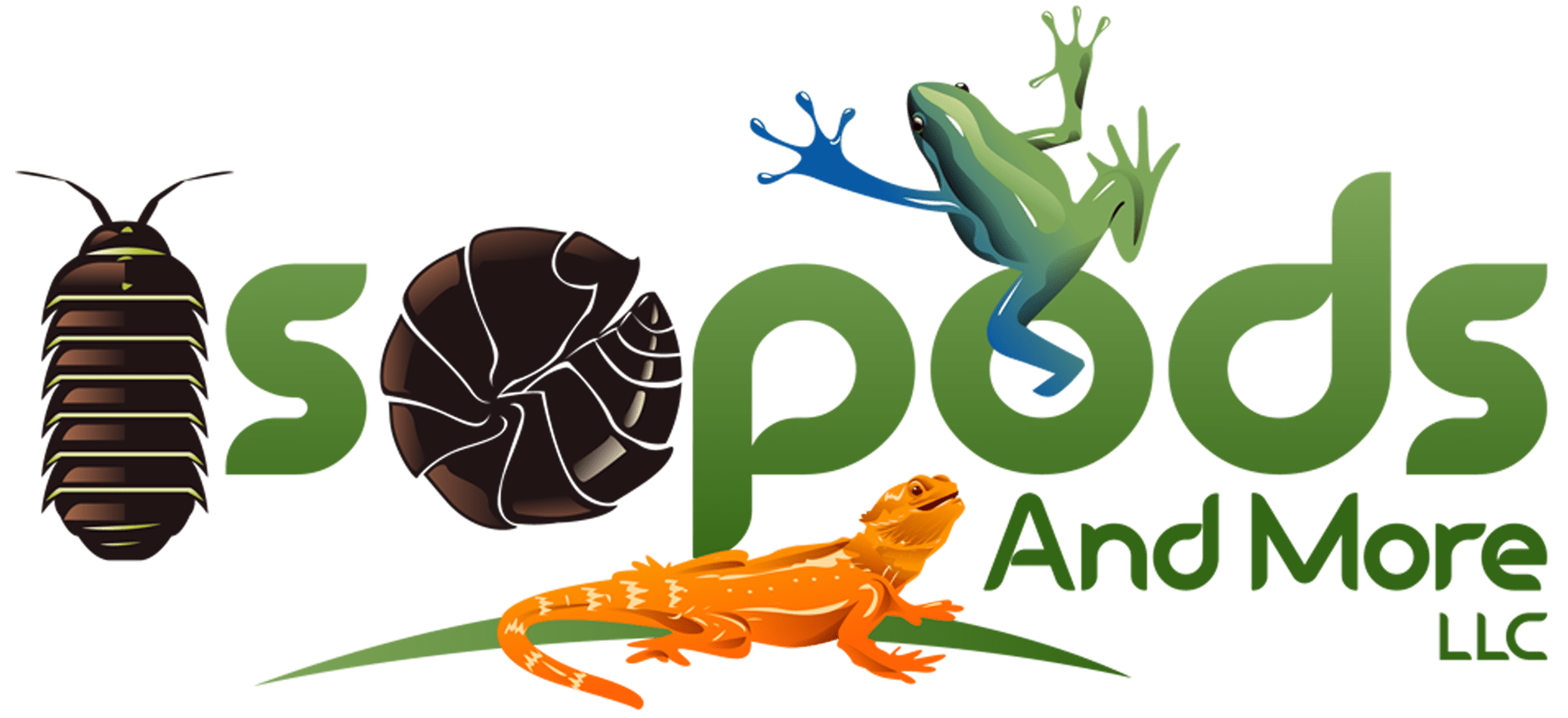As a proud bearded dragon owner, I am always on the lookout for ways to enhance the quality of life for my scaly friend. That’s when I stumbled upon the concept of bioactive enclosures – a revolutionary approach to creating a habitat that mimics the natural environment of these majestic creatures.
Bioactive enclosures go beyond the traditional glass tanks and plastic decorations. They aim to recreate a mini ecosystem within your bearded dragon’s home, complete with living organisms that help maintain a healthy and clean environment.
Benefits of using a bioactive enclosure for your bearded dragon
So, why should you consider switching to a bioactive enclosure for your bearded dragon? Well, let me tell you, the benefits are truly remarkable!
First and foremost, bioactive enclosures provide a more natural and stimulating environment for your scaly companion. With live plants, soil, and a variety of insects, your bearded dragon will have plenty of opportunities for exploration and enrichment. It’s like turning their habitat into a five-star resort!
Secondly, bioactive enclosures promote a self-cleaning system. The live organisms, such as isopods and springtails, act as your very own clean-up crew. They break down waste and organic matter, effectively reducing the need for frequent cleaning and minimizing odors.
Lastly, bioactive enclosures can improve your bearded dragon’s overall health and well-being. The naturalistic environment encourages exercise, mental stimulation, and a more balanced diet. It’s a win-win situation for both you and your scaly friend!
Components of a bioactive terrarium
Now that you’re convinced of the wonders of a bioactive enclosure, let’s dive into the essential components you’ll need to create a bioactive terrarium for your bearded dragon.
- Substrate: The substrate is the foundation of your bioactive enclosure. It should be organic, free of chemicals, and capable of supporting plant growth. Options like coconut coir, topsoil, and sand can be combined to create the perfect substrate for your bearded dragon.
- Plants: Live plants are a crucial element in a bioactive terrarium. They provide shade, hiding spots, and even snacks for your bearded dragon. Choose plants that are safe for reptiles, such as pothos, spider plants, and hibiscus.
- Decorations: Add some natural decorations, like rocks, branches, and logs, to create a more realistic and aesthetically pleasing environment. These will also serve as climbing structures for your bearded dragon and add variety to their habitat.
- Lighting and Heating: Proper lighting and heating are vital for your bearded dragon’s health. You’ll need a combination of UVB lights for vitamin D synthesis, basking lights for heat, and ambient lighting to mimic day and night cycles.
- Water and Food Dishes: Don’t forget to include shallow water dishes for your bearded dragon to drink from and soak in. Additionally, provide separate dishes for food to keep things neat and organized.
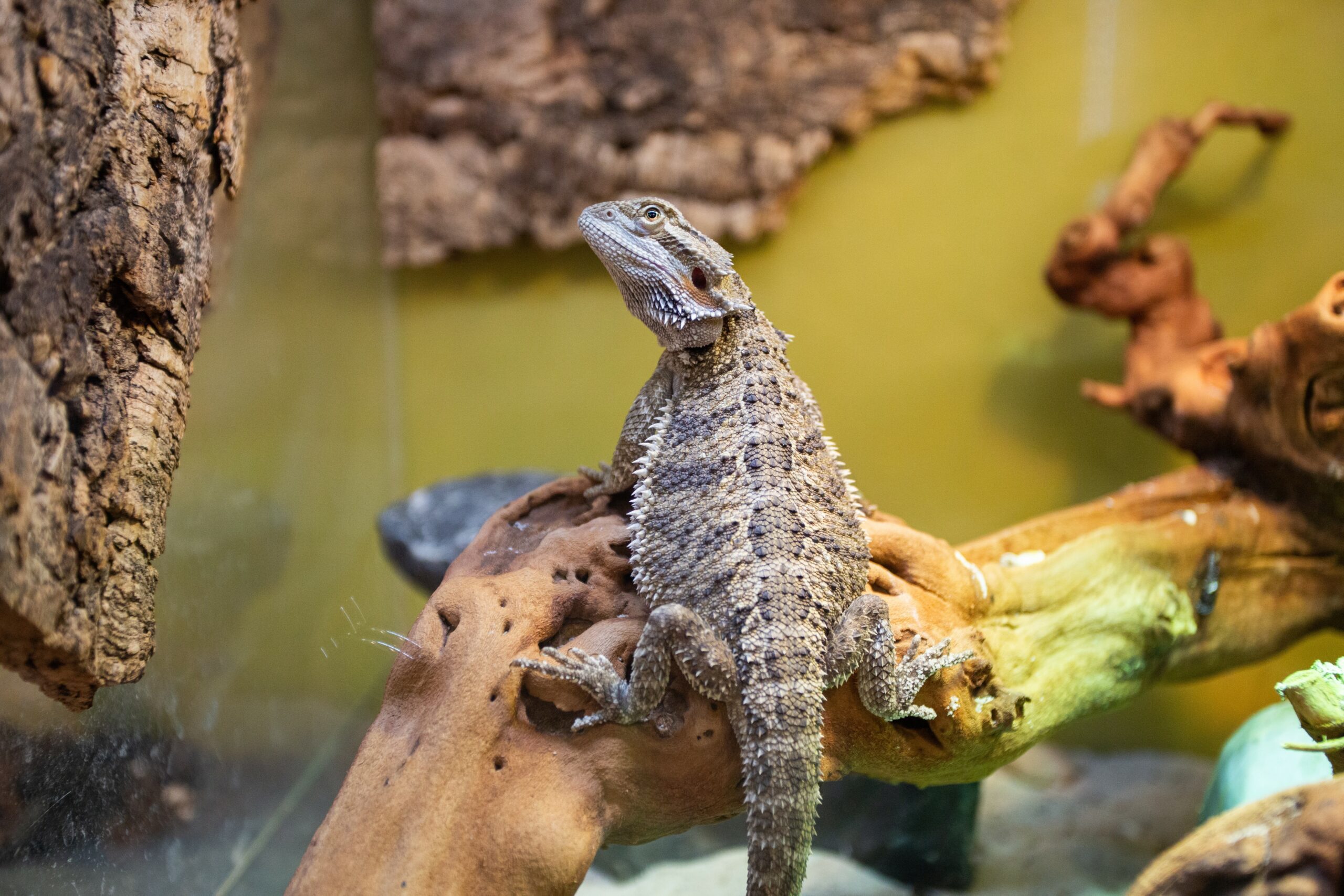
Choosing the right substrate for your bioactive bearded dragon tank
The substrate is the backbone of a bioactive enclosure, and choosing the right one is crucial for the health and well-being of your bearded dragon. Here are some options to consider:
- Coconut Coir: Coconut coir is a popular choice for bioactive substrates due to its ability to retain moisture and provide a naturalistic appearance. It’s made from the fibrous husks of coconuts and is free from harmful chemicals.
- Topsoil: Topsoil is another excellent option for a bioactive bearded dragon tank. It’s rich in nutrients and promotes plant growth. Look for organic topsoil without any additives or fertilizers.
- Sand: While sand can be used as part of the substrate mix, it’s essential to choose a safe and digestible sand specifically designed for reptiles. Avoid using regular playground sand, as it can cause impaction if ingested.
When choosing a substrate, consider the specific needs of your bearded dragon and the plants you plan to include. It’s essential to strike a balance between moisture retention, drainage, and the ability to support plant growth.
Setting up a bioactive bearded dragon habitat step-by-step
Creating a bioactive bearded dragon habitat may sound like a daunting task, but fear not! I’m here to guide you through the process step-by-step:
- Plan and Research: Start by researching the specific requirements of your bearded dragon species and the plants you intend to use. This will help you make informed decisions and ensure the best possible habitat.
- Prepare the Terrarium: Clean and disinfect your terrarium thoroughly before starting the setup process. Rinse all decorations, and make sure the enclosure is free from any harmful residues.
- Layer the Substrate: Begin by layering the substrate in the terrarium. Create a base layer using a mixture of coconut coir, topsoil, and sand (if desired). Aim for a depth of around 3-4 inches, ensuring proper drainage.
- Plant the Vegetation: Carefully plant the live plants in the terrarium, taking into consideration their growth requirements and the desired layout. Add rocks and branches for additional decoration and climbing opportunities.
- Install Lighting and Heating: Position the UVB and basking lights according to the manufacturer’s instructions. Ensure that your bearded dragon has access to both a basking spot and cooler areas within the enclosure.
- Provide Water and Food Dishes: Place shallow water dishes and food dishes in easily accessible locations. Remember to clean and refill the water dish regularly to ensure your bearded dragon has fresh drinking water.
- Introduce Clean-up Crew: Finally, introduce isopods and springtails to your bioactive enclosure. They will help break down waste and maintain a healthy environment. You can purchase these organisms online or from specialized reptile suppliers.
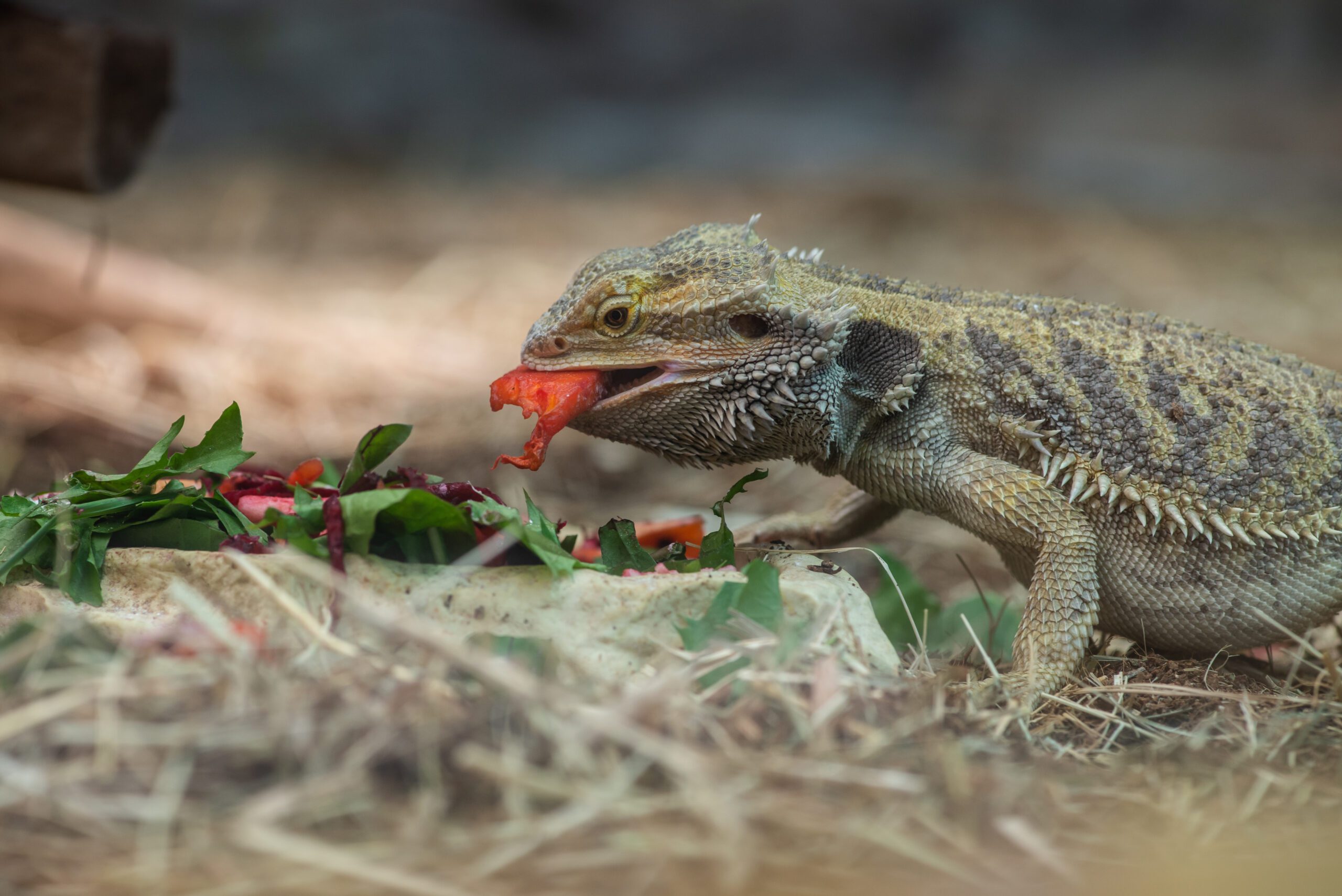
Maintaining a bioactive enclosure for your bearded dragon
Congratulations on successfully setting up your bioactive bearded dragon enclosure! Now, let’s talk about how to maintain it to ensure a happy and healthy habitat for your scaly friend.
- Monitor Temperature and Humidity: Regularly check the temperature and humidity levels in your bioactive enclosure. Use a digital thermometer and hygrometer to ensure they are within the optimal range for your bearded dragon species.
- Water and Feed Your Bearded Dragon: Provide fresh water daily and feed your bearded dragon a balanced diet of live insects, vegetables, and occasional fruits. Remove any uneaten food promptly to prevent mold and bacterial growth.
- Prune and Maintain Plants: Regularly trim and prune the live plants in your bioactive enclosure to prevent overgrowth and maintain a visually appealing habitat. Remove any dead or decaying plant matter to avoid attracting pests.
- Spot Clean and Replace Substrate: While the clean-up crew will handle most of the waste, it’s essential to spot clean any visible droppings or soiled areas. If necessary, replace a small portion of the substrate to maintain cleanliness.
- Regularly Inspect and Clean Decorations: Inspect the rocks, branches, and other decorations in your bioactive enclosure for any signs of mold, decay, or pests. Clean or replace them as needed to ensure a healthy and safe environment.
By following these maintenance practices, you can ensure that your bioactive enclosure remains a paradise for your bearded dragon.
Common mistakes to avoid when creating a bioactive vivarium
While creating a bioactive vivarium for your bearded dragon is an exciting venture, there are a few common mistakes that you should avoid:
- Using Unsafe Plants: Not all plants are safe for bearded dragons. Research and ensure that the plants you choose are non-toxic and suitable for reptiles. Some plants can be harmful or even fatal if ingested.
- Choosing Incompatible Organisms: When selecting isopods and springtails as your clean-up crew, make sure they are compatible with your bearded dragon and its habitat. Some species may not thrive in certain conditions or may compete with your dragon for food.
- Overcrowding the Enclosure: It’s important to strike a balance between a lush environment and overcrowding. Avoid adding too many plants or decorations, as this can make it difficult for your bearded dragon to move around and find their basking spots.
- Neglecting Temperature and Lighting: Proper temperature and lighting are essential for your bearded dragon’s health. Ensure that the basking spot provides the necessary heat, and the UVB lights are of the correct intensity and positioned correctly.
- Neglecting Regular Maintenance: A bioactive enclosure requires regular maintenance to remain functional and safe. Failing to monitor temperature, humidity, and cleanliness can lead to health issues for your bearded dragon.

DIY bioactive substrate recipes for bearded dragons
If you’re feeling adventurous and want to create your own bioactive substrate for your bearded dragon, here are a couple of DIY recipes to get you started:
- Recipe 1: Basic Bioactive Substrate
- Mix equal parts coconut coir, organic topsoil, and clean play sand.
- Add water gradually while mixing until the substrate reaches a damp consistency.
- Test the moisture level by squeezing a handful of the substrate – it should hold its shape without dripping excess water.
- Recipe 2: Nutrient-Rich Substrate
- Mix 2 parts coconut coir, 1 part organic topsoil, and 1 part crushed organic dry leaves.
- Add water gradually while mixing until the substrate is moist but not soggy.
- The crushed dry leaves will provide additional nutrients and enrich the substrate.
Remember to sterilize any natural materials, such as leaves or branches, before adding them to the substrate to prevent the introduction of harmful bacteria or pests.
Isopods and Springtails act as your clean up crew
Isopods and springtails are the unsung heroes of a bioactive bearded dragon enclosure. These tiny organisms work tirelessly to break down waste and organic matter, keeping your dragon’s home clean and healthy.
Isopods are small crustaceans that thrive in moist environments. They feed on decaying plant matter and help control mold and fungi growth. Isopods come in various species, such as dwarf white isopods and powder blue isopods, each with its own unique characteristics.
Springtails are tiny arthropods that inhabit the soil and leaf litter. They feed on fungi, algae, and decaying plant matter, helping to prevent the buildup of organic waste. Springtails are excellent jumpers and can be quite entertaining to watch as they bounce around the enclosure.
You can introduce isopods and springtails to your bioactive enclosure by purchasing them online or from reputable reptile suppliers. They will quickly establish themselves and become an integral part of your bearded dragon’s clean-up crew.

Where to buy bioactive supplies for your bearded dragon enclosure
Now that you’re ready to embark on your bioactive bearded dragon journey, you might be wondering where to find the necessary supplies. Here are a few places to consider:
- Isopods And More LLC: Find a wide range of bioactive supplies, including live isopods and cork bark, at Isopods And More LLC. Enhance your bearded dragon’s habitat with high-quality products from a trusted supplier.
- Reptile Specialty Stores: Visit your local reptile specialty store, where you can find a wide range of bioactive supplies, including substrates, plants, clean-up crew organisms, and decorations. The knowledgeable staff can also provide guidance and answer any questions you may have.
- Online Reptile Retailers: Online retailers specializing in reptile supplies offer a convenient way to browse and purchase bioactive supplies from the comfort of your home. Look for reputable websites that provide detailed product descriptions and customer reviews.
- Reptile Expos: Reptile expos and trade shows often have vendors selling a variety of reptile-related products, including bioactive supplies. These events can be a great opportunity to connect with other reptile enthusiasts and learn from experienced breeders.
Remember to compare prices, read reviews, and ensure that the suppliers you choose have a good reputation for providing high-quality products.
Conclusion
Living the lizard dream has never been easier with the wonders of bioactive enclosures. By creating a habitat that closely resembles their natural environment, we can provide our bearded dragons with a five-star resort experience right in our own homes.
From understanding the concept of bioactive enclosures to choosing the right substrate and maintaining a healthy habitat, this guide has covered all the essentials. By following the steps outlined and avoiding common mistakes, you can create a bioactive bearded dragon enclosure that will delight both you and your scaly friend.
So, what are you waiting for? It’s time to turn your bearded dragon’s habitat into a bioactive paradise – a lush, vibrant, and stimulating environment that will truly make them feel like royalty. Get ready to witness your bearded dragon living their best lizard life in a five-star resort of their own!
